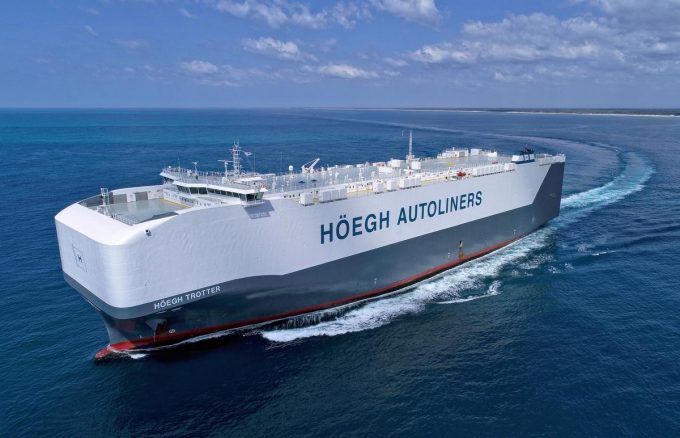CMA CGM in bio-methane deal; seafarers unconcerned by toxic ammonia fuel
There are two events of note in the fuel business today: CMA CGM has signed ...
BA: WIND OF CHANGEMAERSK: BULLISH CALLXPO: HEDGE FUNDS ENGINEF: CHOPPING BOARDWTC: NEW RECORDZIM: BALANCE SHEET IN CHECKZIM: SURGING TGT: INVENTORY WATCHTGT: BIG EARNINGS MISSWMT: GENERAL MERCHANDISEWMT: AUTOMATIONWMT: MARGINS AND INVENTORYWMT: ECOMM LOSSESWMT: ECOMM BOOMWMT: RESILIENCEWMT: INVENTORY WATCH
BA: WIND OF CHANGEMAERSK: BULLISH CALLXPO: HEDGE FUNDS ENGINEF: CHOPPING BOARDWTC: NEW RECORDZIM: BALANCE SHEET IN CHECKZIM: SURGING TGT: INVENTORY WATCHTGT: BIG EARNINGS MISSWMT: GENERAL MERCHANDISEWMT: AUTOMATIONWMT: MARGINS AND INVENTORYWMT: ECOMM LOSSESWMT: ECOMM BOOMWMT: RESILIENCEWMT: INVENTORY WATCH

Höegh Autoliners, which is converting some of its fleet to run on ammonia, is among the beneficiaries of a new $112.3m funding round by the Norwegian government, via green investment fund Enova.
But uptake of ammonia in shipping has been slower than expected, primarily as a result of safety concerns.
The toxicity of ammonia fuel means even a small leak can be deadly at a range of kilometres – apart from the threat to an insufficiently trained crew, an leak could pose a grave risk to people living close to urban ports like Singapore and Hamburg.
Last week, Höegh Autoliners CEO Andreas Enger detailed how its vessels would prevent a deadly ammonia leak, reassuring The Loadstar that its vessels would switch to a conventional fuel on approach to port.
“The beauty of dual-fuel engines is that they allow us to swap seamlessly between fuels,” he said. “This could allow us to change to marine gas oil as we approach and leave port, and seal the ammonia tank. A sealed ammonia tank cannot leak.
“When it comes to ammonia, our biggest concern is to protect the engine room, the crew, when operating in the deep sea,” explained Mr Enger. “We are being very careful, not jumping ahead and taking risks. We are working to standards set by the IMO and regulators.”
Mr Enger explained that ammonia as cargo had long been shipped on specialised carriers. And he argued that the challenges of adapting it to use as ship fuel – and the ecological consequences of a spill – would be minimal compared with those of a full ammonia cargo.
Norway is pursuing a hydrogen and ammonia strategy, wherein ‘blue’ hydrogen and ammonia can be generated using the country’s large supply of fossil fuels. Like methanol, ammonia can be also manufactured by ‘green’ means, using renewable energy. Experts note, however, that it takes less energy to produce ammonia than methanol.
Meanwhile, Mr Enger said Höegh was responding to the growing threat of fire in the sector by increasing the density of firefighting equipment on board, including CO2 extinguishers.
And a greater number of firefighting ‘zones’ onboard (six, according to Mr Enger) improves the capability for tackling lithium battery blazes, which have proved challenging to extinguish.
Mr Enger said he believed EV batteries were not increasing the number of fires, but rather, making them harder to deal with. he said: “The biggest risk on a ship is actually the 12v battery, because EV batteries are built with different safety standards in mind.
“The problem with lithium battery fires is that they have their own oxygen supply.
“Older vessels have one or two [firefighting] zones, whereas our newest ships have six. None of our older ships have fewer than two,” he added.
Comment on this article